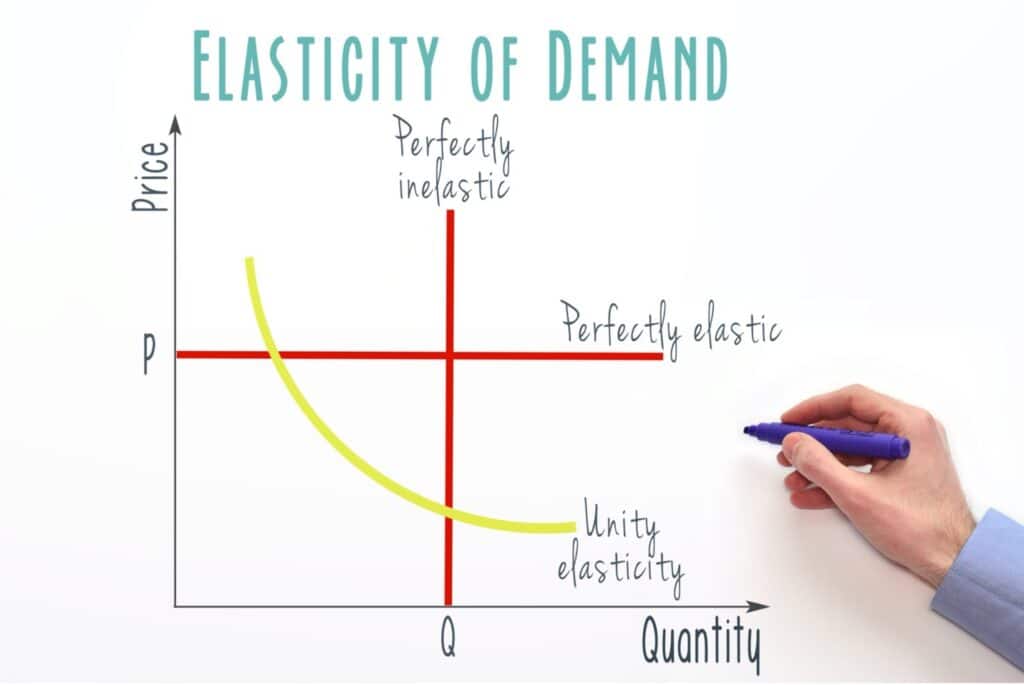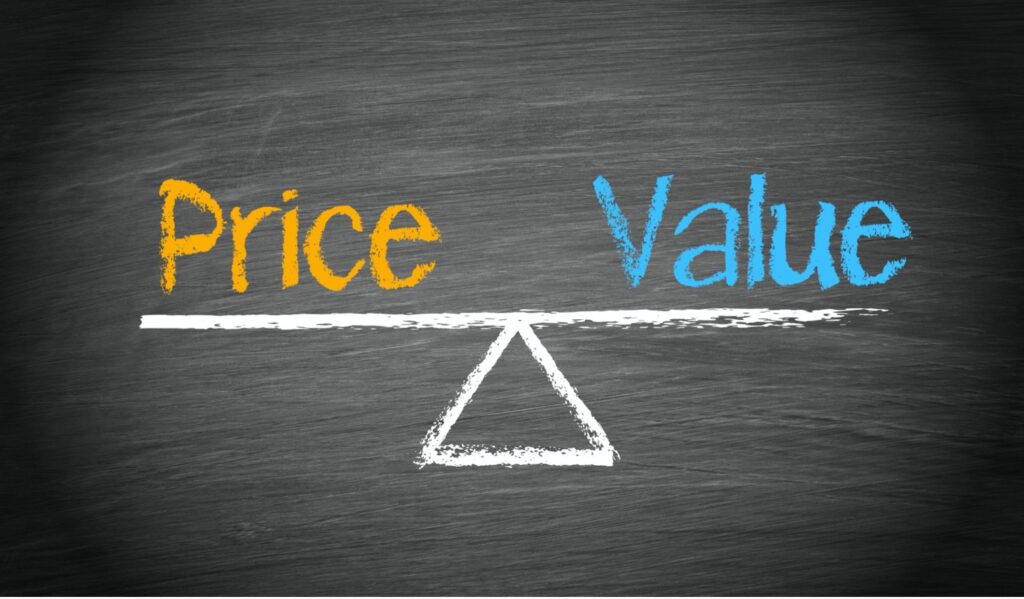Amazon Pricing strategy
In a world of e-commerce competition on eBay, Amazon, Walmart and others, establishing a recognizable brand is paramount. Having worked in the retail buying offices at Kohl’s department stores from 2007-2010, I saw first-hand how important it was for brands to be awarded shelf-space. In those days Amazon was a smaller online store selling mostly books while most people were limited to the stores near their home to find quality consumer brands. Now customers access their favorite brands online first. With free shipping and a pandemic that has kept shoppers at home, online sales have soared.
Sellers hope that shoppers will recognize their online brand for the high quality, ergonomics, and the intricate details that they painstakingly combed through when developing it. Good quality should result in good sales and a pathway to establishing a long-term brand in a category. Unfortunately for new brands launching on Amazon, customers are looking at three things when making a purchase – main listing image, reviews, and price. Since shoppers are no longer confined to walking the isles of a store, the barrier to entering the same selling space and capturing a portion of shopper’s eyes is much lower than it was years ago. There might be thousands of competitors vying for the same shopper’s attention. Because it’s so easy to compare pricing between pages of similar products, Amazon sellers must have a pricing strategy that drives sales without eating all their margin.
A Note about Price Elasticity

Price elasticity of demand is an equation that weighs the sensitivity of quantity demanded when price changes. When price rises, demand falls for many goods. Demand falls for some products more than others when price goes up. For example, when price for potato chips goes up, demanded quantity goes down. But when price for something essential or rare goes up, demand doesn’t dip – like insulin for a diabetic; they will pay almost any price to get insulin when they need it. Insulin buyers are not price elastic (doesn’t matter the cost), most potato chip buyers are elastic (they won’t buy a $20 bag of chips.) Knowing your target customers and their buying habits will help you know how high/low you can go before demand changes.
Cost-Plus Pricing: Know Your Cost

Before you apply a cost-plus pricing strategy (your cost + the margin you want on top), please consider if your product is differentiated or not. If it is differentiated, we don’t recommend using cost-plus pricing; you’re probably missing out on margin. If your product is essentially the same as your competitors and the only way to attract a buyer is by price, cost-plus pricing might be for you. When setting your pricing structure on Amazon (or any platform), you must have a firm grasp of what your costs are. These include production, labor, shipping, duties, advertising and marketing, Amazon fees, and those darn surprises that always seem to take another 10% off the top. As you grow, you can benefit from economies of scale, which lowers your cost per unit as it’s spread over more units. Here’s an example of cost-plus pricing:
- Production cost: $3
- Shipping: $2
- Marketing: $5
- Misc 10%: $1
- Desired profit margin: $4
- Your selling price: $15
This method can be a safe starting point for e-commerce beginners but beware that it’s often difficult to raise price once you’ve set the expectation with your target consumers.
Competitor-Based Pricing: Know Your Competition
If you put two similar products next to the other in an A/B test on Amazon, almost all customers will choose the lower priced product. You may have heard the term “race to the bottom” by competing on price to earn the buy box and higher sales. We don’t recommend trying to be the low-cost seller unless you truly have no added value or differentiation from other sellers in your category. Research your competitors’ prices and features relative to yours; you should know the low and high price boundaries. A basic way to price among your competition is to simply take the average of their prices as a comfortable starting point. This number is, on average, what customers are willing to pay for your product as compared to other similar items. For example:
- Average selling price: $20
- Your cost: $11
- Potential Profit: $9
If you want to hit a homerun, keep your eye on the ball and count on your competition throwing you curveballs. Monitor them closely, don’t freak out and change your pricing every day, and know the general trends between several competitors so you can react carefully.
Value-add Pricing: Know your value

Your product rocks, right? Are you good at telling that story and showing people why your product is different than others’? Your pictures and descriptions are instrumental with this. If you need help, get an agency like Revstep to optimize the heck out of your listings. If you can effectively communicate your value to customers, you can charge more! Value-added pricing is a combination between cost and competitor-based strategies. Cost should always be considered when setting price!
Your “unique selling point” or USP – can be difficult to know sometimes. If you take your competitor-based price (the average competitor price), you’ll need to add a premium for the value benefit your product features. You might look for competitors in a new, but related, category that solve the same problem in a different way than your product does. What do they charge? You might be surprised what people are willing to pay to solve a problem in their life! For example, you sell rubber mats for indoor home gyms. All the competitor reviews say the rubber smells after months of use, but you have developed a non-smelly rubber. Standard competitors are selling rubber mats from $15-$25. While the average is $20, your product offers a premium experience so consider charging at or just below the highest priced product in the competitor price range – around $24. We find that pricing at or above the highest priced products in a category have slow sales if consumers can’t see the added value. Keep pricing within range, but signal that yours is better with price, pictures, and optimized descriptions. We would recommend the following pricing with our example:
- High price: $25
- Value-based price: $24
- Your cost: $11
- Potential Profit: $13
Pricing is always a moving target based on customer demand and price elasticity (how much they are willing to bend to buy your product). You’ll know pretty quickly if customers can live happily without your added value product and higher price! This method requires testing price points over time and will probably swing depending on seasonality.
Other Pricing Considerations:
Consider dynamic pricing (think flexible pricing) when your competition price drops, you want to compete so you lower your price. If there are competitor stockouts or high demand, you raise your price. Using a repricing software could also be advantageous. Bundle pricing may be interesting if you have complementary products that are often sold together. You might save some money on the FBA shipping fee with one package rather than two. It’s a nice differentiator that also increases your average order value. Loss leader pricing can be tricky, but it can make sense in a variation listing that will grab attention with an interesting price range. For example, if you sell leggings at $20 and one of the variations is listed at $9.99 (below your cost – the loss leader), the price will show up as $9.99-$20 which encourages consumers to visit the listing and potentially pay $20 even if they might not have originally been interested in paying that price. Here’s an example where 90% of the skus in this variation are $20.99 but the list price is from $13.99-$20.99:

Final Thoughts
A single pricing strategy is likely going to fall flat over the lifetime of your products. Most successful listings on Amazon have life cycles due to new competitors showing up and charging less, offer something newer and differentiated, listing new colors or materials or use-cases, etc. Your pricing efforts must change and adapt to the customer’s demand and their purchasing alternatives over time. You’ll catch on pretty quick as you monitor Amazon shopper’s reactions to each of your price changes and strategies. If you ever need help or consultation about Amazon pricing, please don’t hesitate to reach out to us at www.revstep.com!
